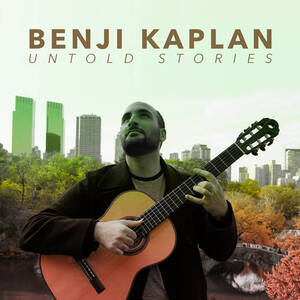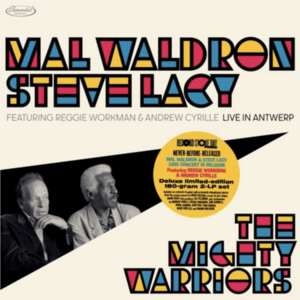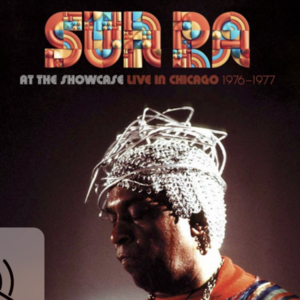White Hassle
Ian Koss
Pop in White Hassle’s Life Is Still Sweet EP and strap yourself into your chair. Dave Varenka’s propulsive drumming, along with Marcellus Hall’s plaintive vocals and harmonica, blend explosively with guitars, turntables, and miscellaneous kitchen implements to create five tracks that range from the infectious shuffle of “Watertank” to the misty yearning of “Let It Be Me,” an update of the Everly Brothers classic. While Hall and Varenka both hail from NYC staple Railroad Jerk, White Hassle (which recently added guitarist Matt Oliverio to the mix) is a beast of its own, a sort of stripped-down act that can easily drown out the clatter of a passing subway car without spilling a whole lot of decibels. I spoke with vocalist/guitarist/harmonicist Marcellus Hall on a sunny September morning…
“wh”
• •
What have you been up to these last few days?
As a band?
In general…
We just got finished playing a show on Saturday, a CD release show in New York. Mostly I’ve been just working.
This is your second White Hassle album. Is Railroad Jerk still an ongoing thing?
It’s ongoing as a name. Unfortunately, we haven’t been active at all. Kind of dormant, I would think, due to the fact that we haven’t got a record deal at the moment and the fact that I’m putting a lot of energy into White Hassle.
What is White Hassle for you that Railroad Jerk is not?
“wh1”
It’s another step towards slipping down further. Personally, I felt that Railroad Jerk was getting too…big for its britches. I wanted to get back to simpler music, so White Hassle was arrested from the frenzy of Railroad Jerk activity, and it just grew from there. I’d been doing my own songs that didn’t fit into the Railroad Jerk format for years, and then Dave [Varenka] joined the band, I started doing side work with him. White Hassle grew out of that, starting out as funk, as an exercise to stretch our muscles, for him to sing background harmony and for us to have fun covering songs, rather than writing our own.
What kind of songs did you cover?
We did a P.J. Harvey song called “Dry,” and “Taking Care of Business” by Bachmann Turner Overdrive. “Loose” by the Stooges, and “To Sir With Love” by Lulu… just the other night we did “Signed Sealed Delivered.” And we’ve done tons of country and Everly Brothers, George Jones…
Is there something in particular you’re looking for in covers?
They happen to be just songs we like, and we’re also trying to prove a point, in terms of saying that we can cover anything, and that you don’t have to be a funk band to cover a funk song. We have this idea that we can cover anything, that any song can be ground through our machine and come out sounding sweet.
You mentioned wanting to make things simple and strip them down a little bit, but the production on Life Is Still Sweet is amazing – I wouldn’t necessarily call it “stripped down.”
[Laughs] I know what you mean. Maybe another word for “stripped down” would be “limited.” We like to limit our sound. Production in the studio is another story, but it’s an ethic more than it is a strict practice. I’m fascinated by the idea of being free to travel anywhere, easily, with one’s music. The idea of a harmonica represents that to me, because it’s so portable. Playing pots and pans, which is what Dave does with his drum kit, symbolizes that in that we’ve done shows in which we’re missing a drum kit, and he’ll pick things up in the basement of the club, or the radio station where we’re at.
“wh2”
Where did the production come from? Was it something you’d envisioned, or was it late hours tinkering in the studio?
It’s rounding out the songs. They’re not afterthoughts, or forethoughts either. As the song was being laid down, it was obvious that it needed this or that to augment it. There’s not a bass on most of the songs, except for the first one. Bands like Hound Dog Taylor’s and the Violent Femmes appeal to us in their simplicity. Maybe I’m trying to describe something that’s more in our minds than it is on paper.
Do you have any plans to hit the road, or are you playing around town?
Mostly around town. Dave’s working at a job which requires him to be there at least through November – he’s working for Hillary Clinton. A PR firm, that’s hired by her, so he needs to be there until the elections.
He’s a publicist by day?
Not at all. He’s just learning some computer things. It’s not even a reflection of his political affiliation; it’s just what he’s doing.
“wh3”
So what is your alter ego?
I’m an illustrator.
For magazines? Where could I see your work?
The New Yorker. New York Magazine, New York Press…
So New York City.
Yeah, but New York is international. I’ve also done work for airline magazines, GQ… whatever I can get.
Have you been doing that for a long time?
About ten years. It’s a good job, because it allows me to make my own hours, and I’m my own boss. I can tour.
It’s almost the perfect musician’s job. I’ve drawn since I was born; I was the artist guy in the class, and it was a natural choice for me. I went and studied art and came to New York to do this. It took me a while, but now I’m at the point where I can support myself. I see doing drawings and writing songs as a similar thing, coming out of the same creative impulse. However, when I’m doing things for a magazine, being so commercial, it’s a bit like a straightjacket and it’s not so personal. I do a lot of drawings on my own that are more personal.
Is there a lot of cross-pollination between the work you do as an illustrator and your music?
Yeah, especially in the early days of Railroad Jerk, because I was writing a certain type of lyrics, and I was doing a comic strip. It felt like both were personal outgrowths, because the comic strip had a character that had silly words coming out of his mouth, the same way that the songs had silly words. It felt like two sides of the same coin.
“wh4”
What is your dream illustration gig?
I really enjoy doing stuff for the New Yorker, because it’s well-respected and a lot of people with taste seem to read it. I don’t mean like snobbish taste, I mean people who appreciate certain types of artwork, or art in general.
The artwork that I like to do – the visual side – has a certain populist strain to it. It’s drawings of people, and scenes of the city and society. It’s not abstract, it’s not fantasy, it’s not surreal. It’s sort of surreal, maybe. Yeah, it is, in a way. And I think those aspects that I just named, in opposition of other aspects are what also define the music that I write. Commercial art is commercial art. There’s fine art, which is supposedly the other side of the tracks. I try to walk down the middle, because I don’t want to be too elitist with art or music that is too esoteric.
Have you ever been recognized for your illustration work – “hey, you’re the Marcellus Hall that does the New Yorker stuff…”
Actually, I have. People come up to us all the time on the street and say “we love White Hassle, Railroad Jerk, blah blah blah.” But once or twice someone’s said “I really love your illustrations.” That’s kinda cool.
I take it it’s not as frequent…
No – illustrators don’t get that. That’s why I had to be a musician.
• •
Life is Still Sweet is available from Orange Records at http://www.orangerecordings.com. Contact the band at whitehassle@yahoo.com ◼












